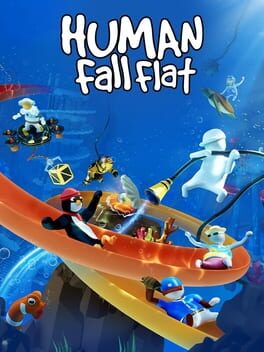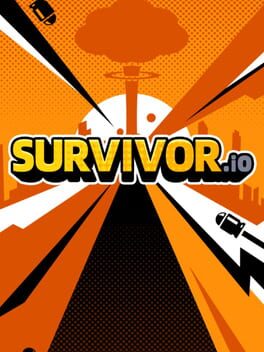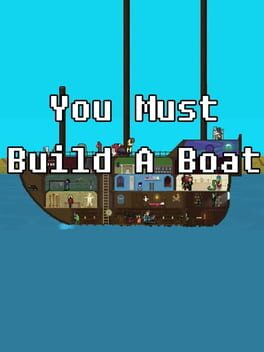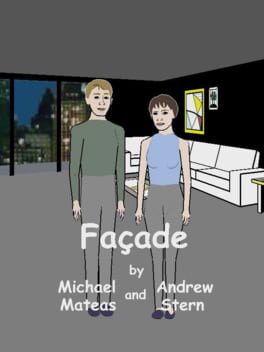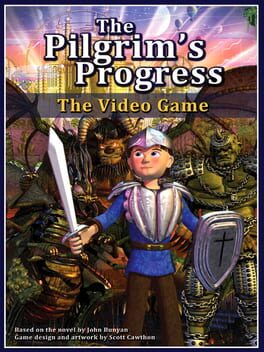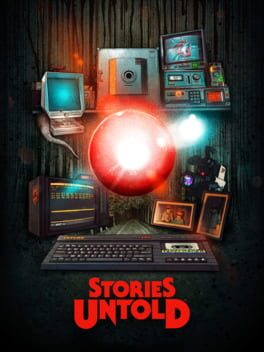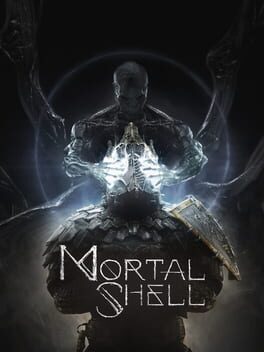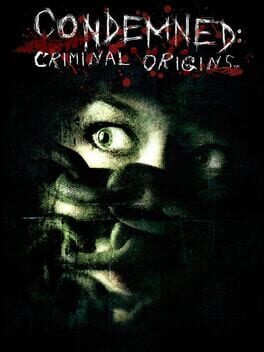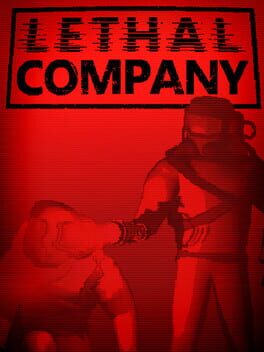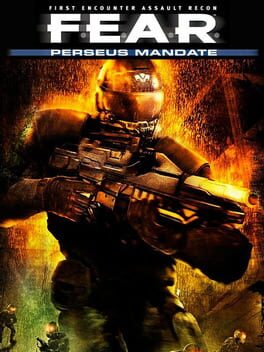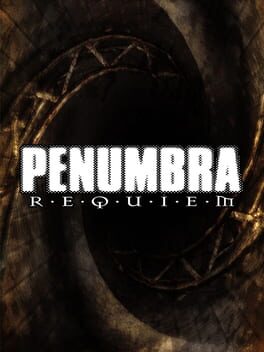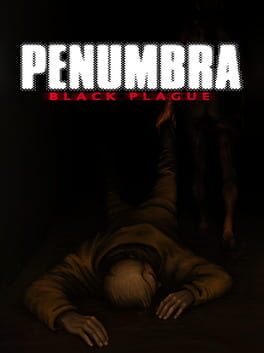2016
Thoughts on the new levels:
Port: The coastal Mediterranean aesthetic is pretty excellent and it has some nifty platforming here and there. However, most of the level's progression and challenges is stuff that's already been done a lot better previously in the game, even in the base game levels. 6/10
Underwater: Follows in the legendary footsteps of water levels before it, in that: it's bad, the reduced gravity is a horrible gimmick that pretty much ruins the entire level, and it features some new music that's all pretty cool. Although, the game doesn't even get to be pretty as the promo pictures are completely false. I expect some mystical blue and colorful retreat, and then the game ends up looking like a cut unfinished beta level from Spongebob BFBB. There's also admittedly some cool platforming here and there. 3/10
Port: The coastal Mediterranean aesthetic is pretty excellent and it has some nifty platforming here and there. However, most of the level's progression and challenges is stuff that's already been done a lot better previously in the game, even in the base game levels. 6/10
Underwater: Follows in the legendary footsteps of water levels before it, in that: it's bad, the reduced gravity is a horrible gimmick that pretty much ruins the entire level, and it features some new music that's all pretty cool. Although, the game doesn't even get to be pretty as the promo pictures are completely false. I expect some mystical blue and colorful retreat, and then the game ends up looking like a cut unfinished beta level from Spongebob BFBB. There's also admittedly some cool platforming here and there. 3/10
TBD
Vampire Survivors (developed by Supercell)
I don't know what my thing has been recently with playing roguelike mobile games, but I gotta stop. Anyway, it manages to be a pretty basic and fun topdown roguelike with some cool mechanics and pressure to pursue builds (which is good for a meathead like me who just takes whatever abilities seem attractive at the moment). However, take this, and bake it into a confusing jungle of mysterious currencies, convoluted menus, and freemium game practices.
I don't know what my thing has been recently with playing roguelike mobile games, but I gotta stop. Anyway, it manages to be a pretty basic and fun topdown roguelike with some cool mechanics and pressure to pursue builds (which is good for a meathead like me who just takes whatever abilities seem attractive at the moment). However, take this, and bake it into a confusing jungle of mysterious currencies, convoluted menus, and freemium game practices.
There is some weirdo out there who was like
"Yeah! Let's fuse a Candy Crush/Bejeweled tile-matcher mobile game with a roguelite, all with some classic RPG influence! That'll be good!"
And you know what? Props. It still is pretty sick. It is a little bit more linear than I remembered, but it's not often this style of tile-matcher has this much depth and mechanics to it. And with risk-reward systems too? They were cooking.
"Yeah! Let's fuse a Candy Crush/Bejeweled tile-matcher mobile game with a roguelite, all with some classic RPG influence! That'll be good!"
And you know what? Props. It still is pretty sick. It is a little bit more linear than I remembered, but it's not often this style of tile-matcher has this much depth and mechanics to it. And with risk-reward systems too? They were cooking.
2018
The gameplay loop is just sort of all it has to offer, and while I found it pretty average, ymmv. I thought that new mechanics were being introduced at a fine-enough rate to keep things interesting, but this decelerated as the game is like, way too long. The last few missions are also just infuriating, as the first 2/3 of the game at least gives you some freedom in how you approach, but the difficulty in the last third forces you to be extremely cut-and-dry about it, and if you fail (like you likely will on each one), just do it all over again in your bored stupor. Really messes with the pacing, and by the time the story kicks into "endgame", I was completely exhausted and it took me like five months to get back around to finishing it.
There is this sense of freedom that the game dangles over you like a carrot, and there is a much better hypothetical version of this game where there's more freedom and ingenuity that comes with approaching missions. A lot of mechanics that hint at this really upset me, like the waveform bar that shows the noise you're making. Ultimately useless, but in the first couple hours of the game I was waiting to see how the game would use it in a cool way.
Overall it's probably in the better half of quick Unity asset games I've played, but it could've been a lot better if it was half its length.
There is this sense of freedom that the game dangles over you like a carrot, and there is a much better hypothetical version of this game where there's more freedom and ingenuity that comes with approaching missions. A lot of mechanics that hint at this really upset me, like the waveform bar that shows the noise you're making. Ultimately useless, but in the first couple hours of the game I was waiting to see how the game would use it in a cool way.
Overall it's probably in the better half of quick Unity asset games I've played, but it could've been a lot better if it was half its length.
2005
2017
Disappointingly short, but makes excellent use of its 3 hour runtime with an incredible phantasmagoria of 80s technology, unseen terror, and hostile mind games, creating an experience that demands a replay after completion. After previously brushing with a couple games that were essentially trying to be other games before booting this one up, it was wonderfully refreshing to play a game that is very confident in its own unique weirdness. I never found the “puzzles” to be too rousing, but they were unique enough to do much more than just keep me going.
Sporadic performance issues and the lack of a skip button are the only real marks I have against the experience, otherwise an excellently spooky time that I couldn’t recommend enough.
Definitely worth a spoiler-filled review, which I will eventually get around to.
Sporadic performance issues and the lack of a skip button are the only real marks I have against the experience, otherwise an excellently spooky time that I couldn’t recommend enough.
Definitely worth a spoiler-filled review, which I will eventually get around to.
2020
Condemned is a jubilant, evil-grinned celebration of twisted crime thrillers, and even when the story is muddled and the movement can feel sluggish, it still excels with its great combat, astounding sound design/music, and striking visuals, creating an atmosphere and overlying tension that feels absolutely decrepit and putrid, in the best way possible.
Combat is not exactly on Sekiro levels or anything, but those latent senses I formed during my time with that game were coming out with this one. It has some surprising depth to it with blocking and counters, with a very minimal focus on guns considering their scarcity, but when you pick them up, you always have the upper hand. The focus on melee combat with a touch on devastating guns is a great yin to the yang of F.E.A.R. 's focus on gunplay with minimal focus on the hilariously over-the-top melee system. Bouncing off of that, instead of F.E.A.R.’s array of heavy military weapons, the array of weapons in Condemned, if you could even call it that, helps the game imbue its squalid and low-class environment, where everything and anything scattered around seems like a weapon. Some of my favorite examples of this were both detached locker doors and school desk tops in the school level. I will admit that the taser basically works against everything great about the game’s combat, but I had the best experience possible in that I accidentally forgot about the taser and spent the vast majority of the game not using it. However, I still cannot force myself to ignore it and it being one of the worst parts of the game. Enemy AI is just as engaging as the actual combat, where they stalk you and take cover and hide to try and get the jump on you as much as they can. When you get to overall movement though, it sounds good on paper, but in actual practice it’s a total nightmare, and not in a good way. The deliberate slowness could help with pacing if the game was strictly linear with no puzzles, but it is such an insane pain in the ass when you’re backtracking or trying to look around for supplies/weapons, and the sprint button has such a fast disposal and slow recharge, creating this sludgy loop of fast, slooooooow, fast, slooooooooow, fast, slooooow that can make progression just garbage. However, the movement and stamina actually works pretty well for combat, adding a lot of weight and strategy into the process. I understand that having faster movement would make this game even shorter than it already is (the game’s length is not a problem, trust me, I’ll get to that shortly), and there’s okay ideas in its implementation, but it seriously needed some reevaluation in its final form.
The story is not really a huge part of why this game excels, because at its core, it’s pretty vague, nonsensical, and seems like a mishmash of several murder mystery movies, most notably Se7en but also Minority Report and Oldboy to a lesser extent. However, it serves as a good catalyst for its levels, and does a lot to create this coherent carnival of amazingly creepy and offputting locations. I think all the people saying the game quickly loses its footing are smoking loud (or just referring to the story, most likely), because in my opinion the game starts good and keeps getting better and better, with the last few levels all feeling standout. The game is impressively short, beaten in only 6-7 hours, but not one level feels like it takes away from the upwards-accelerating haunted phantasmagoria it feels like. I’m a big fan of when games just have a seeming apocalypse going on in the background of the story that is mostly irrelevant to the central plot/conflict (we learn this is sadly not the case in the sequel). In terms of atmosphere, progression, and setpieces, the department store level is an absolute masterpiece and sets an insurmountable standard for the rest of the game (as great as what’s left is).
Sound is such a huge part of why this game excels, and even when this is mainly in reference to the game’s incredible sound design, it’s also like jazz, in how it can be about the sounds that don’t get played. There are so many subdued and drawn-back moments of terror when music is not there to make it more tense. All you’ll hear are footsteps, breaths or rattling chains nearing you, and that is so much scarier than hearing le scary music or le shock sound effect, just you, silence, distant noise, and your brain to make of that what you will. This unseen terror is very deliberate in tying into the game’s “background horror” where the world seems to be ending around the protagonist while he’s preoccupied with other things. Especially great is the game’s forgoing of an in-engine reverb system and uses what I could call “pre-rendered reverb” to get the echoing of people’s voices and noises in a much more realistic manner. Voices in another room absolutely sound like voices in another room, and it really puts you off-guard the first few times you hear it, adding to the overall immersion in a fantastic way. In continued regards to sound, the score is great at its shining moments, but as explained earlier, is used sparsely in order to let the sound design shine.
To me, Condemned feels like a combination of two games among my all-time favorites: Cry of Fear and BioShock 1, which both happened to release after Condemned, and while it shares similar flaws to both of those, the terror and atmosphere is still clamoring at me weeks after I beaten it. It is simply psychotic to me that Monolith managed to release both F.E.A.R. and this game in the exact same year. Thoroughly unbelievable; The absolute cooking that was going on in that studio between 2004 and 2005.
Combat is not exactly on Sekiro levels or anything, but those latent senses I formed during my time with that game were coming out with this one. It has some surprising depth to it with blocking and counters, with a very minimal focus on guns considering their scarcity, but when you pick them up, you always have the upper hand. The focus on melee combat with a touch on devastating guns is a great yin to the yang of F.E.A.R. 's focus on gunplay with minimal focus on the hilariously over-the-top melee system. Bouncing off of that, instead of F.E.A.R.’s array of heavy military weapons, the array of weapons in Condemned, if you could even call it that, helps the game imbue its squalid and low-class environment, where everything and anything scattered around seems like a weapon. Some of my favorite examples of this were both detached locker doors and school desk tops in the school level. I will admit that the taser basically works against everything great about the game’s combat, but I had the best experience possible in that I accidentally forgot about the taser and spent the vast majority of the game not using it. However, I still cannot force myself to ignore it and it being one of the worst parts of the game. Enemy AI is just as engaging as the actual combat, where they stalk you and take cover and hide to try and get the jump on you as much as they can. When you get to overall movement though, it sounds good on paper, but in actual practice it’s a total nightmare, and not in a good way. The deliberate slowness could help with pacing if the game was strictly linear with no puzzles, but it is such an insane pain in the ass when you’re backtracking or trying to look around for supplies/weapons, and the sprint button has such a fast disposal and slow recharge, creating this sludgy loop of fast, slooooooow, fast, slooooooooow, fast, slooooow that can make progression just garbage. However, the movement and stamina actually works pretty well for combat, adding a lot of weight and strategy into the process. I understand that having faster movement would make this game even shorter than it already is (the game’s length is not a problem, trust me, I’ll get to that shortly), and there’s okay ideas in its implementation, but it seriously needed some reevaluation in its final form.
The story is not really a huge part of why this game excels, because at its core, it’s pretty vague, nonsensical, and seems like a mishmash of several murder mystery movies, most notably Se7en but also Minority Report and Oldboy to a lesser extent. However, it serves as a good catalyst for its levels, and does a lot to create this coherent carnival of amazingly creepy and offputting locations. I think all the people saying the game quickly loses its footing are smoking loud (or just referring to the story, most likely), because in my opinion the game starts good and keeps getting better and better, with the last few levels all feeling standout. The game is impressively short, beaten in only 6-7 hours, but not one level feels like it takes away from the upwards-accelerating haunted phantasmagoria it feels like. I’m a big fan of when games just have a seeming apocalypse going on in the background of the story that is mostly irrelevant to the central plot/conflict (we learn this is sadly not the case in the sequel). In terms of atmosphere, progression, and setpieces, the department store level is an absolute masterpiece and sets an insurmountable standard for the rest of the game (as great as what’s left is).
Sound is such a huge part of why this game excels, and even when this is mainly in reference to the game’s incredible sound design, it’s also like jazz, in how it can be about the sounds that don’t get played. There are so many subdued and drawn-back moments of terror when music is not there to make it more tense. All you’ll hear are footsteps, breaths or rattling chains nearing you, and that is so much scarier than hearing le scary music or le shock sound effect, just you, silence, distant noise, and your brain to make of that what you will. This unseen terror is very deliberate in tying into the game’s “background horror” where the world seems to be ending around the protagonist while he’s preoccupied with other things. Especially great is the game’s forgoing of an in-engine reverb system and uses what I could call “pre-rendered reverb” to get the echoing of people’s voices and noises in a much more realistic manner. Voices in another room absolutely sound like voices in another room, and it really puts you off-guard the first few times you hear it, adding to the overall immersion in a fantastic way. In continued regards to sound, the score is great at its shining moments, but as explained earlier, is used sparsely in order to let the sound design shine.
To me, Condemned feels like a combination of two games among my all-time favorites: Cry of Fear and BioShock 1, which both happened to release after Condemned, and while it shares similar flaws to both of those, the terror and atmosphere is still clamoring at me weeks after I beaten it. It is simply psychotic to me that Monolith managed to release both F.E.A.R. and this game in the exact same year. Thoroughly unbelievable; The absolute cooking that was going on in that studio between 2004 and 2005.
2023
It certainly wears its influences on its sleeve, feeling like a sometimes crude cross between the best parts of Deep Rock Galactic and Phasmophobia, with lore and settings inspired by Iron Lung and Astroneer. But the core roguelike gameplay makes it, while pretty repetitive, a lot of tense fun, especially with friends.
While much shorter than most, A Story About My Uncle spends every moment building itself up as an endlessly fun and sometimes challenging adventure filled with childlike wonder and dreamlike beauty.
I originally got this game in 2015 on sale due to the “parkour” tag and have had it sitting in the backlog ever since, and finally spent a weekend I forced myself not to care about school to play through it in one sitting. As I’m a teacher, I’ve been thinking a lot about how to instill wonder in students, and in tandem I’ve been thinking about wonder itself, and what used to give me that sense of “wonder” that certain of my favorite childhood media gave me. I really think the visuals, in the art style and locations, really sell the almost otherworldly invitation that had been coming back to me.
The parkour in the game is much less Mirror’s Edge and more like Uncharted, being able to grapple hook across these humongous levels that is super satisfying and sometimes provides a pretty good challenge when you’re on a timer. There are many instances of the fact “THIS IS A STUDENT GAME” being very clear and loud, but there’s enough passion and wonder to move past them.
I originally got this game in 2015 on sale due to the “parkour” tag and have had it sitting in the backlog ever since, and finally spent a weekend I forced myself not to care about school to play through it in one sitting. As I’m a teacher, I’ve been thinking a lot about how to instill wonder in students, and in tandem I’ve been thinking about wonder itself, and what used to give me that sense of “wonder” that certain of my favorite childhood media gave me. I really think the visuals, in the art style and locations, really sell the almost otherworldly invitation that had been coming back to me.
The parkour in the game is much less Mirror’s Edge and more like Uncharted, being able to grapple hook across these humongous levels that is super satisfying and sometimes provides a pretty good challenge when you’re on a timer. There are many instances of the fact “THIS IS A STUDENT GAME” being very clear and loud, but there’s enough passion and wonder to move past them.
Significantly better than the more middling expansion that preceded it. Although the story isn’t that engaging or interesting, it puts new gameplay, enemies, weapons, and locales first. The collection of new weapons are all pretty awesome even though the balancing on a couple of them is exceedingly nuts. Even though it does drag here and there, every single gunfight is a delight, in classic F.E.A.R. fashion.
2008
Requiem, for reasons that are mostly unfortunate, takes the place of being the worst entry in the Penumbra series with its surprising distancing from its survival horror format and, for whatever reason, turning into a mediocre puzzle-platformer with controls that were certainly not meant for the genre.
As many people familiar with the series know, it was planned to be an entire trilogy, where Overture and Black Plague would serve as the first and second entries. However, dissonance with the publisher stopped that from happening and urged Frictional to tie up loose ends on the story with this pretty weak-willed expansion for BP.
For some reason, they decided to drop the really solid survival horror that made Black Plague a really fun time and just completely shifted to puzzles for the whole time, and not just the “where’s the key hidden” fare that the game usually hangs with. The game sometimes plays like a really shoddy attempt at capturing the cold and hostile serenity underlined with logic puzzles that made the first Portal game so great. There’s a lot of platforming in some of these puzzles, and trust me, the game was DEFINITELY not meant for platforming, as jumping from lift to lift sometimes feels like a diceroll’s chance rather than determined by your own skill. It really sucks when some of the puzzles are halfway decent, because next thing they’re hitting you with the most random reference to the Donkey Kong arcade game in the form of a platforming challenge, and dear god it does not work in the slightest, with not only the puzzle itself sucking but the music randomly taking a chiptune feel, which was so random and offputting.
Even though the ending was pretty bad, I didn't mind the "story" that was at hand, and the couple times they do comic relief with the centre announcer saying out-of-character things really worked for me.
On the bright side, I’m glad that Frictional got to kick off the Amnesia series after this (and to great success/popularity), because in many ways, the first game is essentially the Penumbra 3 that never happened; There’s a big overlap in tone, mechanics, and level design, and even when I don’t completely buy the hype and praise for TDD, I’m glad it really kickstarted Frictional’s popularity.
Hopefully I’ll look into Penumbra: Necrologue soon, which is a total conversion mod for Amnesia that basically turns it back into Penumbra with all the same mechanics, in the form of a continuation of the story.
As many people familiar with the series know, it was planned to be an entire trilogy, where Overture and Black Plague would serve as the first and second entries. However, dissonance with the publisher stopped that from happening and urged Frictional to tie up loose ends on the story with this pretty weak-willed expansion for BP.
For some reason, they decided to drop the really solid survival horror that made Black Plague a really fun time and just completely shifted to puzzles for the whole time, and not just the “where’s the key hidden” fare that the game usually hangs with. The game sometimes plays like a really shoddy attempt at capturing the cold and hostile serenity underlined with logic puzzles that made the first Portal game so great. There’s a lot of platforming in some of these puzzles, and trust me, the game was DEFINITELY not meant for platforming, as jumping from lift to lift sometimes feels like a diceroll’s chance rather than determined by your own skill. It really sucks when some of the puzzles are halfway decent, because next thing they’re hitting you with the most random reference to the Donkey Kong arcade game in the form of a platforming challenge, and dear god it does not work in the slightest, with not only the puzzle itself sucking but the music randomly taking a chiptune feel, which was so random and offputting.
Even though the ending was pretty bad, I didn't mind the "story" that was at hand, and the couple times they do comic relief with the centre announcer saying out-of-character things really worked for me.
On the bright side, I’m glad that Frictional got to kick off the Amnesia series after this (and to great success/popularity), because in many ways, the first game is essentially the Penumbra 3 that never happened; There’s a big overlap in tone, mechanics, and level design, and even when I don’t completely buy the hype and praise for TDD, I’m glad it really kickstarted Frictional’s popularity.
Hopefully I’ll look into Penumbra: Necrologue soon, which is a total conversion mod for Amnesia that basically turns it back into Penumbra with all the same mechanics, in the form of a continuation of the story.
A huge improvement over Overture, Black Plague provides a lot of answers to the open-ended nonsense Overture called its story. It somehow learns to take itself a bit less seriously while also being definitely scarier, with Clarence serving as some expert comic relief who still manages to pull the horror reins fantastically here and there. Also a significant improvement in puzzles, even there still were a few that made no sense and sucked. They understood how garbage the combat was in the first game, and their response to that was to remove it altogether, which came together to great success, with the Tuurngait Infected feeling absolutely horrifying to get chased down by, and from that making the couple actual “combat” sections feel pretty fantastic to engage with.
The whole old lost mine aesthetic unfortunately gets traded out for more run-of-the-mill abandoned laboratories, but it still works great in my opinion. Black Plague definitely feels like a true predecessor of what was to come in a couple years with the first Amnesia, with the focus on hiding from your enemies instead of engaging them in combat.
The story still poses some huge open-ended insinuations that feel way too huge to wrap your head around, but at least it was way less lackadaisical than Overture’s story progression.
The whole old lost mine aesthetic unfortunately gets traded out for more run-of-the-mill abandoned laboratories, but it still works great in my opinion. Black Plague definitely feels like a true predecessor of what was to come in a couple years with the first Amnesia, with the focus on hiding from your enemies instead of engaging them in combat.
The story still poses some huge open-ended insinuations that feel way too huge to wrap your head around, but at least it was way less lackadaisical than Overture’s story progression.
A great bite-sized helping of Nazi-killing gratification that both serves as a homage to the original Wolfenstein trilogy as well as cutting some of the fat off of The New Order to create a consistently great 6 hour romp.
MachineGames just understands good gunplay. The arsenal that this game presents, both stuff taken from TNO and new stuff invented for the expansion, is so much fun and every piece falls into the puzzle. The Bombenschuss, while I would’ve liked the scope to be a bit more magnifying, is an incredibly satisfying sniper rifle and totally took me back to my days of sniping with the Kar98k in COD WaW. The shotgun doesn’t provide a gigantic new perspective to the one in TNO, but…it’s still very satisfying. The grenade launcher is sort of a one inch punch hard ping/weapon and I love it.
The balancing on higher difficulties (I beat the game on Uber) can sometimes be a mixed bag but it’s honestly really nice when you’re not constantly coming up against bullet sponge enemies, especially after finishing Fallout 4 on Hard. Enemy armor actually feels very practical and something that can be both destroyed and that has deliberate entry points that house a very reasonably health-having enemy.
The characters, why you don’t spend a lot of time with them, are still really impactful. I still can’t believe that the game got me extremely upset about the death of a character you only really spend about a minute or two with.
It made me so happy to see people doing Nazi zombies again, even though the OG Wolfenstein 3D sort of already did it with the mutant enemies. Their attack patterns as well as speed feels really erratic and unpredictable, which makes the last couple chapters where you deal with them work so much more, where you’re essentially retreading over the same level from before but in a much different context.
This is less a praise of TOB and more one of TNO, but I love how the enemies look less like Nazi soldiers and more like these horrifying steampunk mutants. Gives them kind of this Half Life 2 Civil Protection vibe where they had to be altered forever just for a chance of surviving.
MachineGames just understands good gunplay. The arsenal that this game presents, both stuff taken from TNO and new stuff invented for the expansion, is so much fun and every piece falls into the puzzle. The Bombenschuss, while I would’ve liked the scope to be a bit more magnifying, is an incredibly satisfying sniper rifle and totally took me back to my days of sniping with the Kar98k in COD WaW. The shotgun doesn’t provide a gigantic new perspective to the one in TNO, but…it’s still very satisfying. The grenade launcher is sort of a one inch punch hard ping/weapon and I love it.
The balancing on higher difficulties (I beat the game on Uber) can sometimes be a mixed bag but it’s honestly really nice when you’re not constantly coming up against bullet sponge enemies, especially after finishing Fallout 4 on Hard. Enemy armor actually feels very practical and something that can be both destroyed and that has deliberate entry points that house a very reasonably health-having enemy.
The characters, why you don’t spend a lot of time with them, are still really impactful. I still can’t believe that the game got me extremely upset about the death of a character you only really spend about a minute or two with.
It made me so happy to see people doing Nazi zombies again, even though the OG Wolfenstein 3D sort of already did it with the mutant enemies. Their attack patterns as well as speed feels really erratic and unpredictable, which makes the last couple chapters where you deal with them work so much more, where you’re essentially retreading over the same level from before but in a much different context.
This is less a praise of TOB and more one of TNO, but I love how the enemies look less like Nazi soldiers and more like these horrifying steampunk mutants. Gives them kind of this Half Life 2 Civil Protection vibe where they had to be altered forever just for a chance of surviving.
